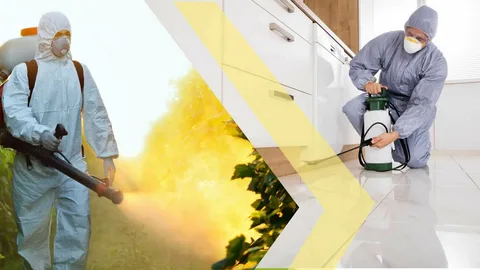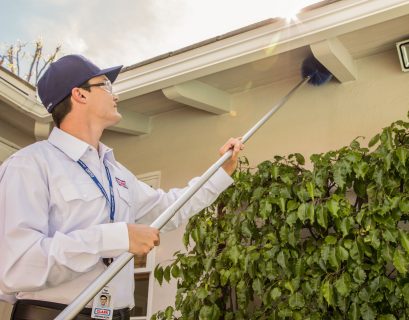Introoduction To Pest Control
Pest control is an essential service for maintaining a safe and healthy environment in both residential and commercial spaces. Whether it’s a minor nuisance like ants and flies or a major infestation of rodents, termites, or bed bugs, pest control is critical to prevent the spread of diseases, property damage, and the overall discomfort caused by these unwanted invaders.
In this guide, we will explore the importance of pest control, different types of pests, and various methods of prevention and treatment, with a particular focus on Bed Bug Treatment, one of the most challenging aspects of pest management.
The Importance of Pest Control
Pest infestations can occur at any time, often without warning. If not addressed in a timely manner, they can lead to a wide range of issues, including:
- Health Risks: Many pests, such as rodents, cockroaches, and bed bugs, carry pathogens that can cause diseases in humans and animals. For example, rats can spread leptospirosis, hantavirus, and plague, while cockroaches can trigger allergies and asthma.
- Property Damage: Termites, for instance, are known for silently destroying the wooden structures of homes and buildings, which can compromise their integrity. Other pests, such as rodents, may chew through wires, insulation, and other materials, causing costly repairs.
- Contamination of Food: In commercial settings, especially in restaurants and food processing facilities, pests can contaminate food supplies, leading to foodborne illnesses and health violations.
- Loss of Reputation: For businesses, especially those in hospitality and food services, pest infestations can result in negative reviews, loss of customers, and even legal repercussions.
Given these risks, it’s clear that pest control is not just about eliminating pests but also about protecting health, property, and livelihoods.
Types of Pests
Various types of pests can infest homes and businesses. Understanding the most common pests and their behaviors can help you identify potential infestations and take the appropriate action.
- Rodents (Rats and Mice)
- Rodents are notorious for spreading diseases and causing damage to structures. They chew through materials, contaminating food and water supplies with their droppings and urine. Controlling rodents requires a combination of traps, baits, and exclusion techniques to prevent future infestations.
- Cockroaches
- Cockroaches are resilient pests that thrive in warm, humid environments. They are carriers of pathogens and allergens that can exacerbate asthma and allergies. Roach infestations can spread quickly if not treated immediately with proper chemical treatments and sanitation practices.
- Ants
- Ants may seem harmless, but certain species, like carpenter ants, can cause significant structural damage to homes. Others, like fire ants, are aggressive and can deliver painful stings. Ant control involves identifying the species and eliminating their nests with targeted baits.
- Termites
- Termites are among the most destructive pests, especially to wooden structures. They operate silently and can cause extensive damage before being detected. Preventive measures like termite barriers and regular inspections, along with professional treatments, are essential to control these pests.
- Bed Bugs
- Bed bugs are small, blood-sucking insects that can infest homes, hotels, and other sleeping areas. They hide in cracks and crevices of furniture, bedding, and walls, making them difficult to detect. Bed bugs are particularly problematic because of their resistance to many pesticides and their ability to spread quickly. Bed Bug Treatment requires a comprehensive approach to ensure complete eradication.
Bed Bug Treatment: A Persistent Challenge
Among all pests, bed bugs present one of the most persistent and challenging infestations. These tiny insects feed on the blood of humans and animals, typically while they sleep. Their bites can cause itching, irritation, and allergic reactions, and the psychological toll of living with a bed bug infestation can be severe.
The key to effective Bed Bug Treatment lies in understanding their biology and behavior. Bed bugs are excellent at hiding and can survive for months without feeding. Their eggs are small and difficult to detect, and they are resistant to many conventional pesticides. This makes DIY bed bug treatments less effective, and professional pest control services are often necessary to eliminate an infestation completely.
Steps in Bed Bug Treatment
- Inspection
- The first step in bed bug treatment is a thorough inspection. Bed bugs hide in mattresses, bed frames, furniture, baseboards, and even behind wallpaper. Pest control professionals use specialized tools and sometimes even trained dogs to detect the presence of bed bugs.
- Preparation
- Before treatment can begin, the infested area must be properly prepared. This may involve laundering bedding and clothing at high temperatures, vacuuming thoroughly, and reducing clutter where bed bugs might hide.
- Treatment Options
- There are several methods used in Bed Bug Treatment, each with its own benefits and drawbacks:
- Chemical Treatments: Pesticides are the most common method of bed bug control. However, due to bed bugs’ resistance to some chemicals, professionals often use a combination of products to ensure effectiveness.
- Heat Treatment: Heat is highly effective at killing bed bugs in all stages of life. The infested area is heated to a temperature of around 120-140°F (49-60°C) for several hours, which kills the bugs and their eggs.
- Cryonite Treatment: This involves freezing the bed bugs with a non-toxic carbon dioxide snow. Cryonite is particularly useful in sensitive areas like hospitals and schools where chemicals cannot be used.
- Steam Treatment: Bed bugs cannot survive extreme heat, and steam treatment is another option to kill them. Steam is applied to infested areas, reaching deep into crevices where bed bugs hide.
- There are several methods used in Bed Bug Treatment, each with its own benefits and drawbacks:
- Monitoring and Follow-Up
- After treatment, follow-up inspections are crucial to ensure that the infestation has been fully eliminated. Bed bugs are notoriously difficult to eradicate, so multiple treatments may be necessary.
- Prevention
- To prevent bed bugs from returning, it’s important to adopt good habits such as regular inspections, minimizing clutter, using protective mattress covers, and being cautious when traveling or bringing second-hand furniture into your home.
Integrated Pest Management (IPM)
For effective and sustainable pest control, many professionals advocate for an Integrated Pest Management (IPM) approach. IPM focuses on long-term prevention and uses a combination of techniques to manage pests in the most environmentally friendly and cost-effective way.
IPM strategies include:
- Inspection and Monitoring: Regular inspections help to identify pest problems early before they become infestations.
- Prevention: By sealing entry points, removing food and water sources, and reducing shelter for pests, you can prevent infestations before they start.
- Non-Chemical Methods: Traps, baits, and physical barriers are often preferred over chemical treatments in IPM to minimize environmental impact.
- Targeted Chemical Use: When pesticides are necessary, IPM emphasizes using the least toxic products and applying them in a targeted way to reduce risks to humans, pets, and beneficial insects.
Professional Pest Control Services
While there are many DIY pest control solutions available, certain infestations—like termites, bed bugs, and large rodent problems—often require the expertise of a professional pest control service. These professionals are trained to identify the type of pest, assess the severity of the infestation, and implement a customized treatment plan to eradicate the problem.
In addition to eliminating pests, professional pest control companies provide ongoing services to ensure that the infestation doesn’t return. They can also offer valuable advice on preventive measures, keeping your home or business pest-free in the long term.
Conclusion
Pest control is essential for protecting your home or business from the damage and health risks posed by pests. From minor ant problems to severe bed bug infestations, understanding the type of pest and the appropriate treatment methods is key to effective pest management.
In particular, Bed Bug Treatment remains one of the most challenging aspects of pest control, requiring a combination of chemical, heat, and preventive strategies. For most serious infestations, seeking professional pest control services is the best option to ensure the complete eradication of pests and the prevention of future problems.
By taking proactive steps and understanding the importance of regular inspections, targeted treatments, and preventive measures, you can maintain a safe, healthy, and pest-free environment in both your home and business.












